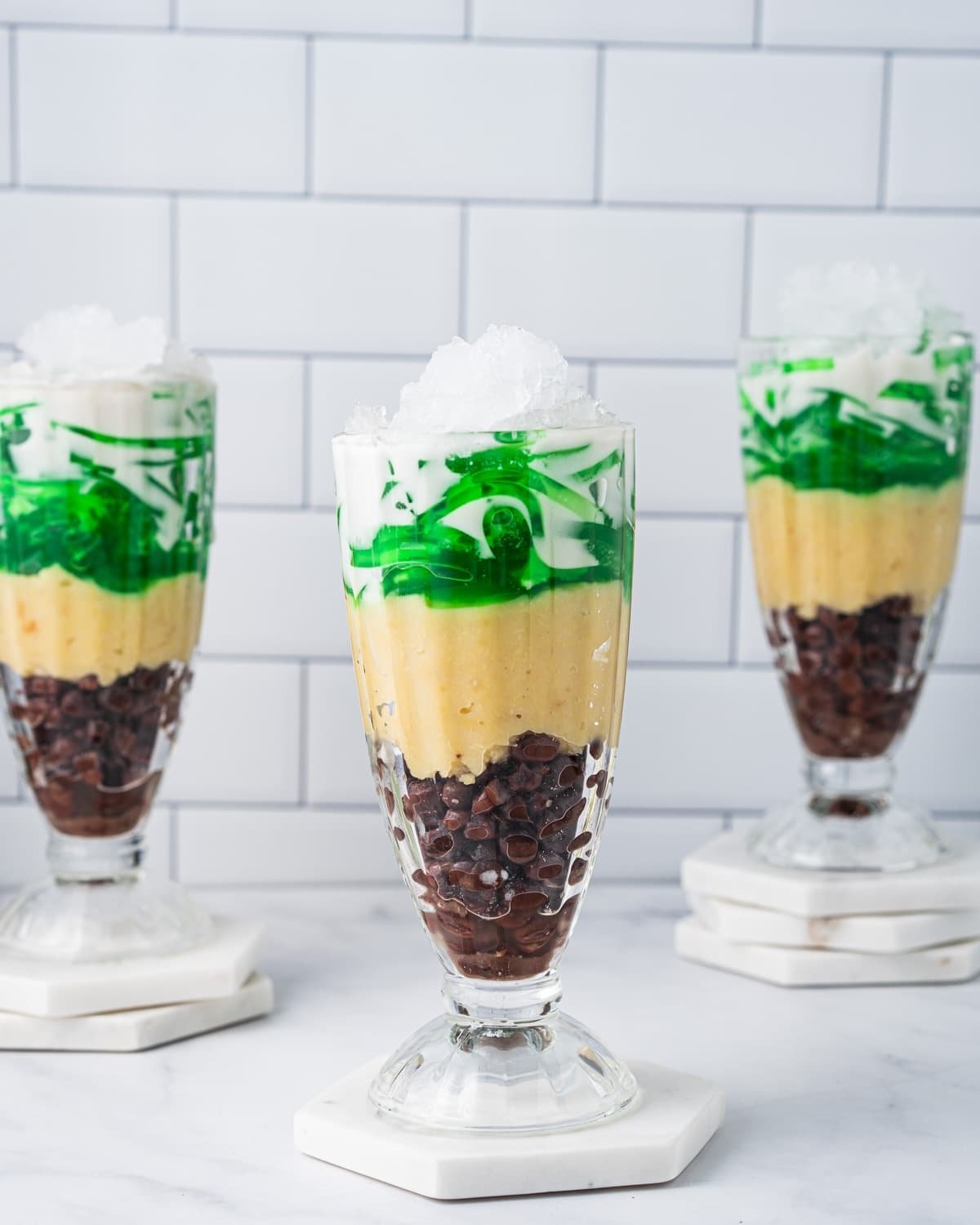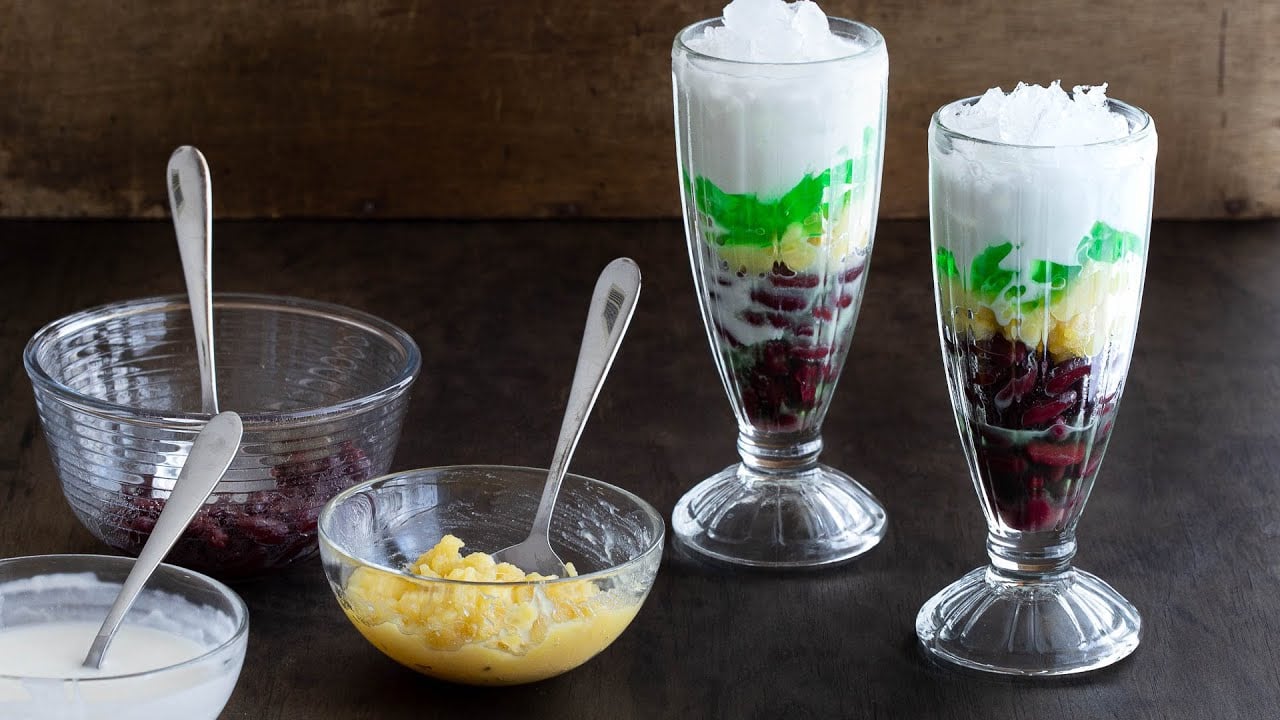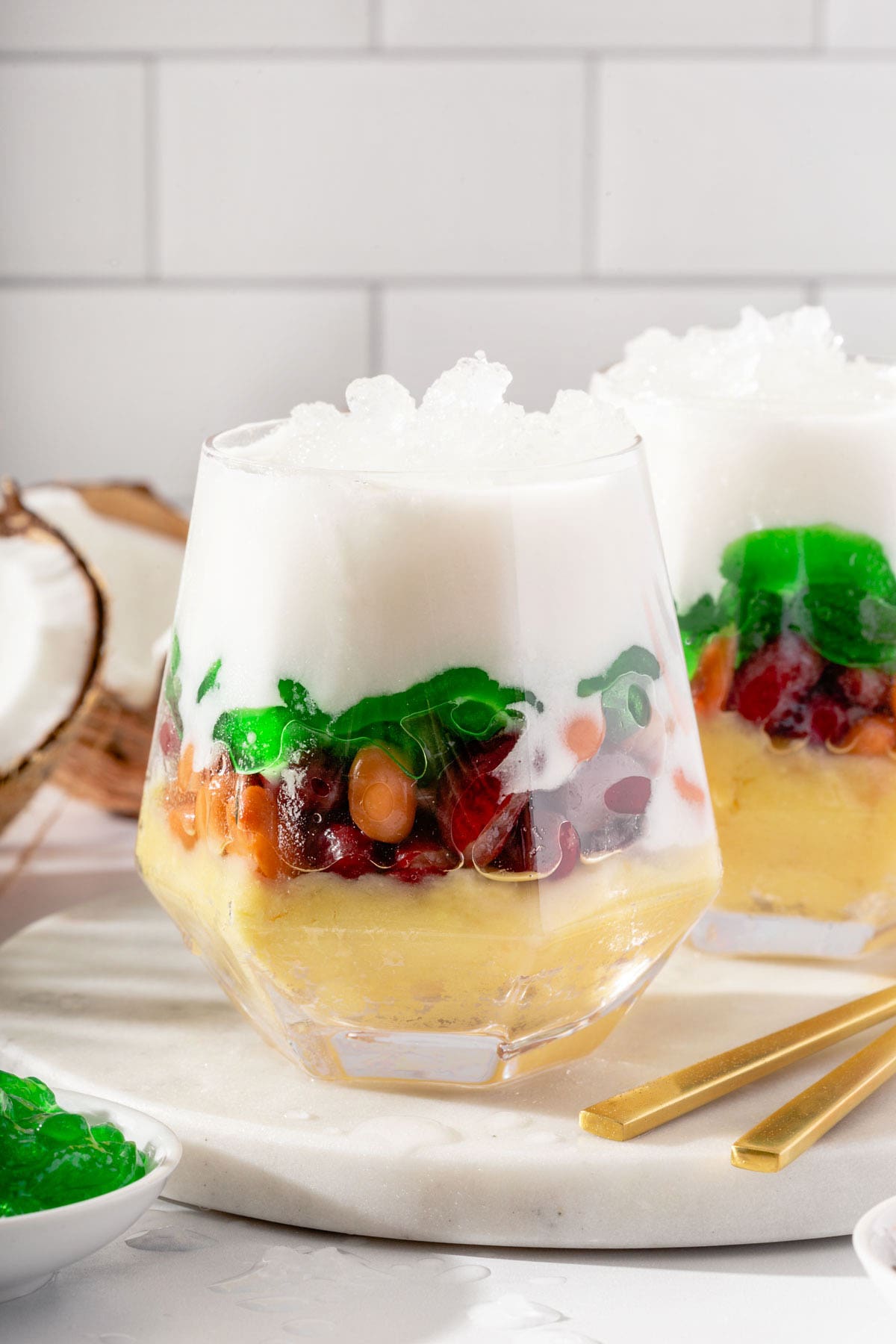
Explore the sweet side of Vietnam's culinary landscape with the iconic Vietnamese three-color dessert, known as "che ba mau." This delightful treat not only showcases the country's rich dessert traditions but also serves as a visual and tasty delight for those indulging in Vietnam travel. Immerse yourself in the world of Vietnamese desserts and let che ba mau be a flavorful highlight of your culinary adventure in this captivating destination.
1. Distinctive features of Vietnamese three-color dessert
Vietnamese three-color dessert, a widely popular Vietnamese dessert, is a visually stunning treat within the country's culinary landscape. This sweet dish typically consists of three distinct layers of colors, creating an aesthetically enticing appeal at first glance. Each color layer in Vietnamese three-color dessert holds special cultural significance in Vietnamese traditions.
The yellow layer often comprises mung bean flour, a portion of glutinous rice, or finely ground mung beans. The green layer is usually derived from coconut leaves or coconut juice, imparting a refreshing taste. Meanwhile, the red layer is crafted from red beans, enhanced with a layer of coconut milk, contributing sweetness and smoothness to the dessert.
What makes this 3-color dessert special is the meticulous preparation of each color layer to ensure a harmonious blend not only in appearance but also in flavor. This delightful dessert can be enjoyed cold or warm, offering a versatile experience.

>>> Discover the flavors of Vietnamese drinks!
2. How to make Vietnamese three-color dessert?
2.1. Layer 1: Yellow mung bean paste
Ingredients: 1 cup of mung beans, sugar
Instructions:
- Rinse the mung beans thoroughly under cold water.
- Soak the mung beans in water for at least 4 hours or overnight for better results.
- Drain the soaked beans and place them in a rice cooker. Add water and cook as if you were cooking rice (approximately 35 minutes) until the beans are soft.
- Once cooked, use a wooden spoon to mash and blend the beans. Add sugar and mix well until smooth.
- Transfer the mung bean paste into a container and let it cool.
Note: If you don't have a rice cooker, steaming the mung beans is an alternative. Steaming is easier than cooking, and you won't need to worry about measuring water and temperature.

2.2. Layer 2: Green pandan jelly
Ingredients: Agar agar powder, pandan extract, sugar
Instructions:
- In a saucepan, bring water to a boil.
- Add the agar agar powder and sugar to the boiling water, stirring until fully dissolved.
- After about a minute of boiling, remove it from the heat and add the pandan extract.
- You should use a glass Tupperware container for easy transfer to the refrigerator. Allow the jelly to cool, then refrigerate until it sets, typically taking 2 - 4 hours.
- Once set, you can cut the jelly into your preferred shapes. We like cutting them into cubes.
Agar agar powder is often used in many Asian recipes as a vegetarian substitute for gelatin, as it is derived from seaweed. It is plant-based and dairy-free, making it suitable for those following vegetarian or vegan diets.

2.3. Layer 3: Red beans, coconut milk and sugar syrup
Ingredients: Red beans (pre-soaked or red bean powder), coconut milk, sugar
Instructions:
- If you are using pre-soaked red beans, cook them in water until they become soft. If you are using red bean powder, mix it with water to create a smooth, lump-free mixture.
- In a pot, bring coconut milk to a boil, add sugar, and stir until the sugar dissolves.
- Add the red beans to the boiling coconut milk, stirring to ensure they blend well.
- Check the sweetness and add more sugar to taste.
- Cook the red bean layer until the mixture thickens and the red beans are well-cooked.
The red bean layer with coconut milk and sugar syrup is a crucial component of Vietnamese three-color dessert, contributing to its sweet flavor profile.

>>> Discover some Vietnamese smoothies!
3. Variations of Vietnamese three-color dessert
Variations of the original Vietnamese three-color dessert can include the addition of different types of jelly or tropical Vietnamese fruits such as lychee, jackfruit, or dragon fruit. They enhance the dessert with new flavors, adding a delightful twist to the classic Vietnamese three-color dessert. Another variation of the 3-color dessert is "che troi nuoc ba mau" or "che cu nang ba mau." Each variation boasts its own distinctive flavor profile, providing a unique experience for those who indulge.
>>> Explore how to make Vietnamese ice cream!
4. Tips for making and enjoying Vietnamese three-color dessert
- Adjust the amount of sugar during the cooking process to suit your taste preferences.
- If you can't find coconut milk, you can purchase young coconuts and process them into coconut water as a substitute.
- Red beans can be steamed to enhance their flavor, but this method doesn't utilize the nutritious red bean juice.
- Serve Vietnamese three-color dessert in a tall glass to allow you to taste all the layers of flavors with each spoonful.

>>> Discover the diversity of Vietnamese street food!
With its vivid layers, pleasing textures, and distinctive blend of ingredients, Vietnamese three-color dessert embodies a genuine celebration of Vietnamese tastes. Whether you are enjoying it for cultural discovery or simply gratifying your sweet cravings, che ba mau will add a touch of joy and authenticity to your dining experience.
Embarking on a mesmerizing journey through Vietnam allows you to fully immerse yourself in the rich cultural tapestry and savor the delightful cuisine. As you explore the enchanting cities of Hanoi, Ho Chi Minh City, Phu Quoc, Nha Trang, Hoi An, and Ha Long, the seamless blend of cultural discovery and culinary delights promises an unforgettable adventure.
As you explore these captivating destinations, you can elevate your stay with the luxurious offerings of Vinpearl, a renowned hospitality brand in Vietnam. Vinpearl’s exquisite hotels and resorts boast a range of upscale amenities, including diverse dining choices, rejuvenating spa retreats, vibrant shopping areas, year-round swimming pools, and top-notch golf facilities.
For an added thrill, venture into VinWonders, Vietnam's premium network of entertainment complexes, where you can engage in exhilarating adventures and a myriad of cultural experiences.


>>> Book rooms in Vinpearl Phu Quoc, Vinpearl Nha Trang, Vinpearl Resort & Golf Nam Hoi An, Vinpearl Resort & Spa Ha Long to have the most memorable journey!
























